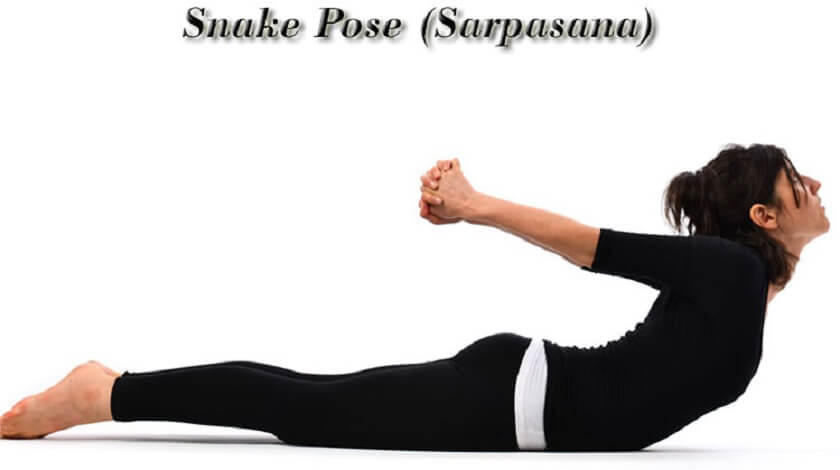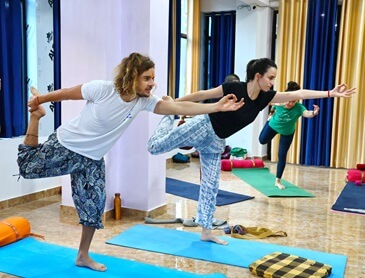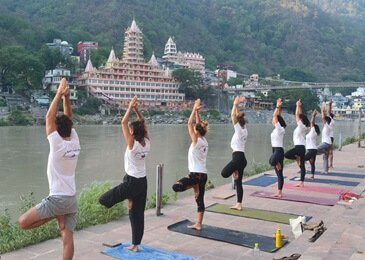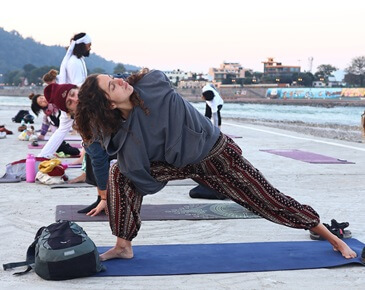
1 Jul. 2019
Sarpasana (Snake Pose)
Sarpasana (Snake Pose) This is a wonderful asana for the heart and lungs as well as the back.
Technique Place a blanket on the floor. Lie flat on your stomach (prone position). Fold your arms behind your back clasping the wrist of one hand with the fingers of the other hand. Rest the forehead on the ground. The legs should be straight and together with the soles facing upwards. Relax the whole body. Breathe normally for a short time. Then inhale deeply and slowly, expanding the chest and abdomen as much as possible.
At the end of inhalation slowly bend the head backward. When you have bent the head backward as far as possible slowly start to raise the shoulders and upper back. The movement is executed by contracting the back muscles and tensing the arms. Raise the body as high as you can without causing any strain. Hold the final pose while continuing to retain the breath inside. Ensure that the weight of the body is supported on the soft part of the abdomen - the belly. The legs should be as relaxed as possible and should remain on the floor throughout. After a comfortable length of time slowly lower the body to the floor while exhaling. Completely relax the body in the starting position. Allow respiration to return to normal. Then repeat this asana up to 5 times. Breathing, awareness, and duration Inhale while in the starting position; this should be as deep as possible for this has much influence on the benefits obtained. Retain the breath while raising the body and maintaining the final pose. Exhale while lowering the body to the ground again. Remain aware of breathing and movement. Stay in the final pose for as long as you can retain your breath.
Limitations Those people who suffer from stomach ulcers, high blood pressure, heart troubles or hernia should not do Sarpasana. Seek expert guidance if you are unsure about whether you should or should not do this asana. More difficult variations If you have strong back muscles and find the previous basic technique easy try the following more difficult variations. The methods are the same as already described but the positions of the arms are different as follows: 1. Outstretch the arms on each side of the body as though they are wings. 2. Interlock the thumbs and hold the arms straight and on each side of the head, so that the legs, trunk, and arms lie in one straight line. The arms are raised at the same time as the head and shoulders during the execution of the asana. These variations apply greater pressure on the abdomen and enhance the benefits. Benefits This asana helps to strengthen the spinal muscles and gives a good massage to the abdomen and pelvic organs. The benefits in this respect are similar to Bhujangasana. Sarpasana has a particularly notable influence on the lungs. The two lungs are composed of millions of alveoli (air cells) which facilitate the exchange of oxygen for carbon dioxide. The oxygen is taken into the body and the carbon dioxide is removed from the body.
If these tiny air cells remain active and the lungs elastic then the lungs retain their general health and efficiency. The natural way of maintaining a healthy pair of lungs is regular, deep respiration. This successively inflates and deflates the tiny alveoli and at the same time stretches the elastic tissue of the lungs. Many people, sad to say, do not breathe properly. They do not utilize anywhere near the maximum usable capacity of the lungs. Consequently, the alveoli tend to become unhealthy through under-activity or inactivity. Sarpasana is a useful asana to help rectify this situation. In the final pose, the breath is retained inside the lungs and a large proportion of the body weight is supported on the abdomen. This raises the pressure within the abdomen, which in turn pushes the diaphragm towards the chest. This pressurizes the air within the lungs and helps to uncrumple and open out inactive alveoli allowing them to resume their normal duties. The effective surface area of exchange in the lungs is in this way increased. This improves the removal of carbon dioxide from the body and the intake of oxygen for distribution to all parts of the organism. The heart also benefits from Sarpasana as the increased pressure within the chest cavity applies a good massage to the heart. Normally, of course, it is impossible to massage the heart for it is imprisoned by the ribs. Sarpasana overcomes this obstacle and tones the heart and strengthens its muscles. The whole body is dependent on a good supply of blood and Sarpasana helps in this way to improve one's physical health.


